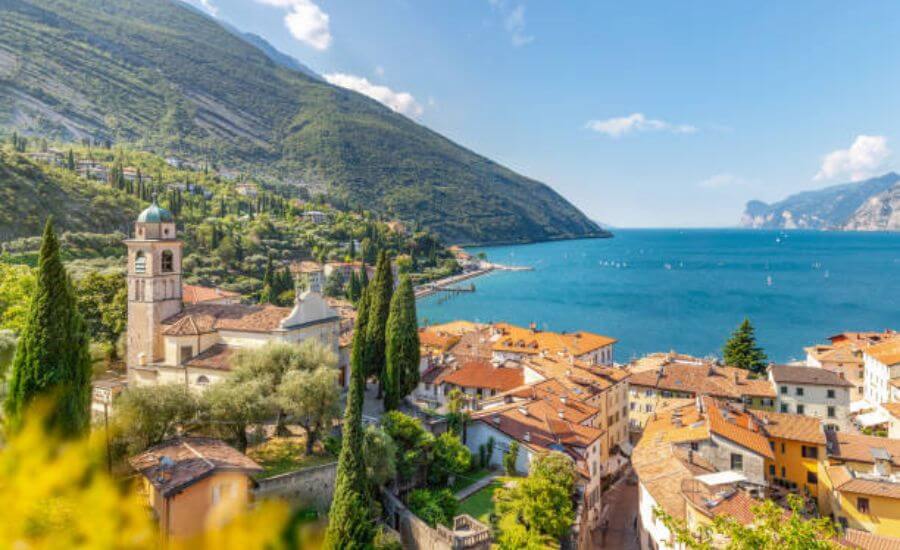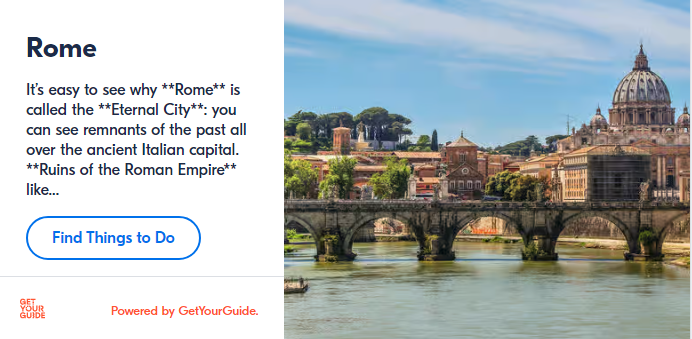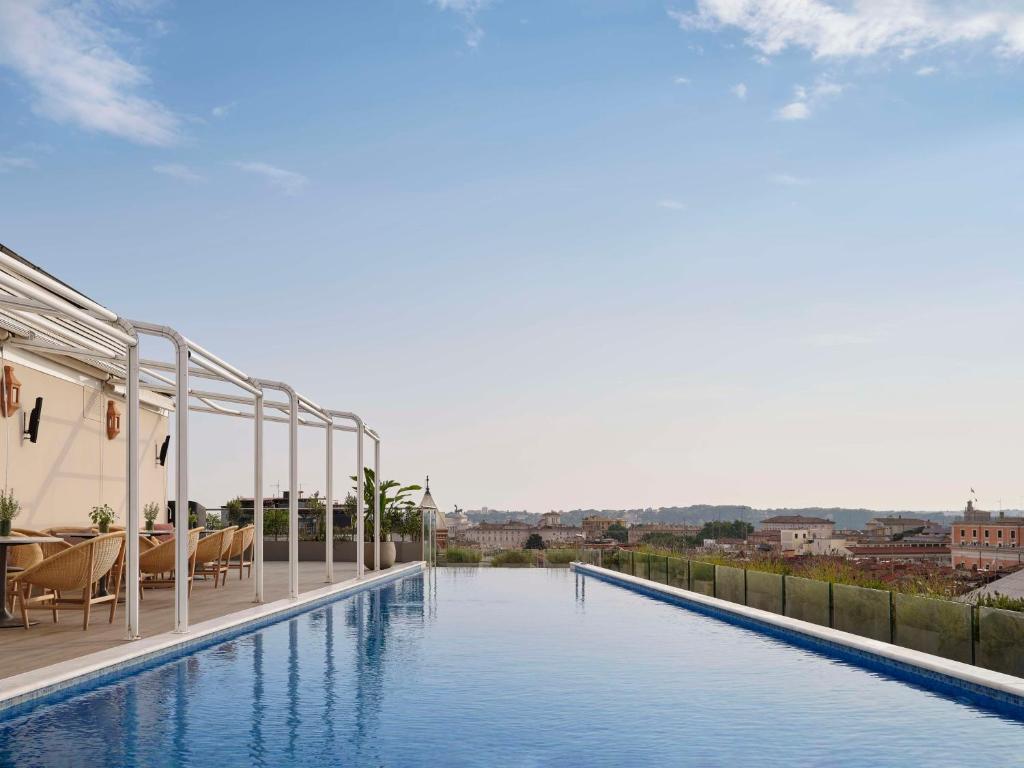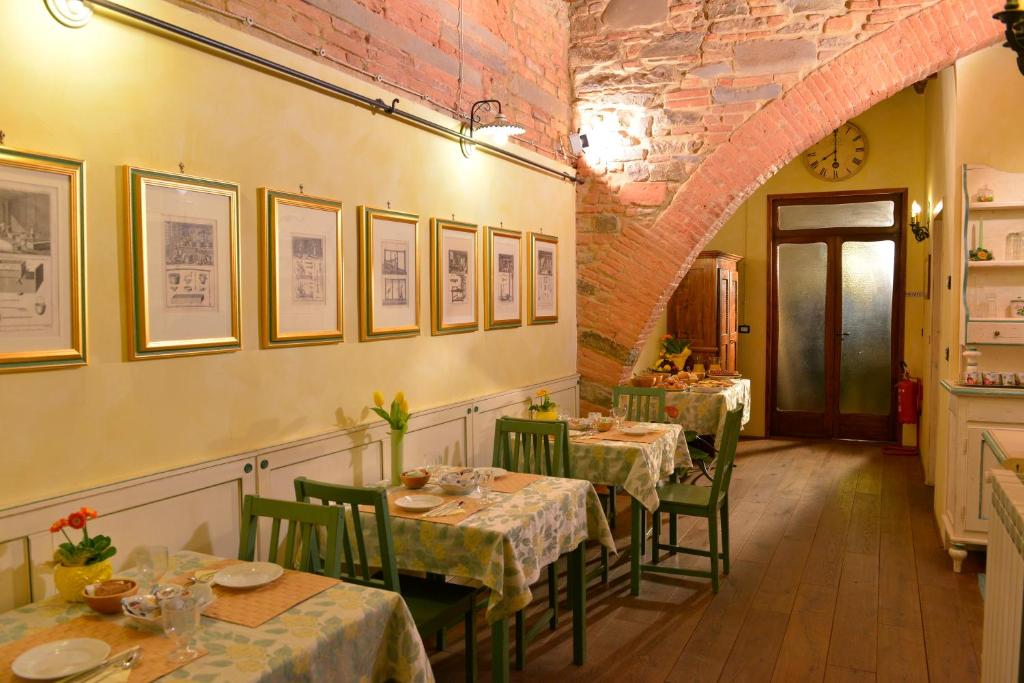Top 5 most underrated places to visit in Italy
If you’ve read my blog before, you know that I believe Italian culture, landscape and scenery are very much like Italian food: better when shared.
And sharing can be hard. Of course, within Italian food culture, it’s a given, but from an American perspective, I find that we tend to be pretty precious with sharing not only food (individual portions for the table, thank you very much), but also information– especially those “hidden gems” that only we and our friends rave about.
It makes sense. Nobody wants to have the quaint, intimate show venue, bar or cafe that they use as a third space be taken over by hordes of people barging in because “someone said this place was cool”. When I was living in New York City, that place for me was Haswell Green’s (RIP to free entry for live-music nights).
I’d use it as the ace up my sleeve when I wanted to seem cool when I met someone new. A casual name drop and boom, you come off as someone in the know. Then one viral TikTok later, a wall was erected in the middle of the bar, effectively cutting off the ability to dance to any live music without committing to a cover charge. RIP fr.
Now, as I travel more, I’m starting to realize that actually, there’s a lot of joy in sharing “hidden gems” when done so responsibly. At least when it comes to you, the person reading this article, I’m gonna trust that you landed here because you want to experience the real Italy, and aren’t just booking into the first Get Your Guide group tour you see. You want something different than a fly in-fly out, “big hitter” itinerary. You, my friend, are in luck today.
Not that this is any sort of heaven-sent or precious advice (I mean come on, I’m just pressing buttons on the keyboard), but I am pretty proud of the list you’re about to read. It’s my top 5 most underrated Italian destinations.
You won’t see Venice, Pisa, Milan or Palermo on here. Some of these places have a population of just over 50,000 people. What they all offer though are incredible, authentic experiences when visiting them, and a different side to Italy that most people will never get the chance to experience.
Without further ado, here’s the list. My top 5 most underrated places to visit in Italy.
1. Lake Garda

You’ve heard of Lake Como before. You’ve seen the villas. The glitz. The glamour.
In fact, you’ve probably heard so much about it that it may surprise you that it’s not even Italy’s biggest lake. That honor goes to Lake Garda, located just under 100 miles to the east.
Now, we need to make one thing very clear here guys: size is not the only thing that matters. In fact, I’d argue that, like many other things in life, bigger is not always better when it comes to lakes.
What makes Lake Garda so great is not its size, but rather the variety of stuff you can find around it. I like to describe it as a choose-your-own-adventure type of deal.
If you like beautiful scenery (does a castle on a lake sound cool to you? Then you’re in this camp), Sirmione is heavenly.
Travelling with family? Lazise has long promenades perfect for beach walks with strollers and as a bonus has two of the country’s most popular amusement parks, Gardaland (one of Europe’s largest and Caneva Aquapark nearby.
The list goes on. Limone sul Garda was giving Amalfi Coast when I was there, Riva sul Garda is great for water sports if you’re an adventurous thrill-seeker, and I can’t forget to shout out Lido 84 in Gardone Riviera, where I had one of the best meals of my entire life.
You can’t go wrong between visiting Lake Como or Lake Garda. What I can say for certain though is that you’ll find just as much is not more to explore around the latter, without the sometimes elitist/snobby junk that comes with visiting the former.
2. Matera

I honestly wasn’t sure if I should share this one on the internet, so let’s keep this one between us, okay? This place is the definition of “hidden gem”, and it’s one of my favorite places to shout out to people looking for really cool modern history and unique architecture that you won’t find anywhere else.
Matera, located in the region of in Basilicata, is the oldest city in Italy, and third-oldest continuously-inhabited city on the planet. People have been living there since 7000 BC. Yet, it was once called the “shame of Italy”. Why? Because as late as 1950, only 3% of dwellings there had running water, and there was so sewage system, heating or electricity. The residents of Matera lived, literally, in caves, called “Sassi”, alongside some of their livestock.
While living in caves in southern Italy might sound kinda romantic to those amongst us who like to “live rugged”, it was far from ideal. The area was rife with poverty and poor living conditions, the infant mortality rate was through the roof, and there was concern for the health of the people who lived there. The concern was so genuine that in 1952 the Italian government forcibly removed 16,000 residents from there, relocating them into new housing projects and agricultural villages.
Have I sold you on this place yet? I’ll admit I’ve done a pretty crappy job making it sound beautiful, and I didn’t even mention the prevalence of malaria there yet.
Why it’s one of my top hidden gems in Italy is because of what’s happened there since. The area has been regenerated while maintaining a lot of its original character, and has since been named both a UNESCO world heritage site and European Capital of Culture.
Now, you can stay in charming hotels built into some of those caves. They even put water and electricity in, so you don’t have to rough it like the old days! Of course, some Stassi still remain untouched, giving you a chance to explore and marvel at the best surviving examples of rock-cut settlements in the entire Mediterranean. That’s pretty dang cool.
3. Mantova (Manuta)

This place has two names depending on who you ask. Why? I have no idea. Apparently “Manuta” is just a more direct translation into English, but it’s also what pops up if you search for this beautiful little slice of heaven on Google Maps.
Y’all, there’s nothing here. Rome, it is certainly not. But that’s why I love it.
Mantova straddles Lombardy and Emilia-Romagna, right smack in the middle of Northern Italy. It’s on a lake, it’s quaint, and it’s got some absolutely stunning Renaissance architecture (the Ducal Palace and Te Palace are impossible to miss).
A bonus for Mantova is that the best time to visit there is the shoulder season, in the fall. It’s then that they produce some of the most unique and delicious pasta in the entire country: Tortelli di Zucca, which is egg pasta filled with cooked pumpkin, amaretti biscuits, Parmesan cheese and mostarda (a type of candied fruit mustard). Imagine all of that with some melted butter and sage as;dkjgnlm;,
Sorry, my fingers slipped because I drooled on my keyboard. Embarrassing.
Needless to say, Mantua is worthy of being added to any Italy travel itinerary if you’re looking for a small town with unique charm and an authentic vibe.
4. Umbria

It’s comical that Umbria isn’t on more Italy itineraries. What are these people thinking when they visit Tuscany for the umpteenth time but don’t visit the region that’s immediately next to it? It’s called the green heart of Italy for a reason, people! This place has soul!
Don’t get me wrong: Tuscany’s gorgeous and if you haven’t been to Italy before, you’ve gotta see it. But once you’ve gotten your fix, you’d be crazy not to venture a bit further south.
In fact, I’d say that the vibes here are very similar, just way less crowded.
Great olive oil? Check.
Fantastic wine? Check. Heck, check it twice. Check check.
Regional food that might make my fingers slip while I type again? Check.
Cities I’d recommend are Todi (known for Piazza del Popolo, one of the most beautiful squares in the entire country), Gubbio (which is home to one of the largest Roman theatres in the country), Bevagna (which gives medieval fairytale vibes) and Spoleto (surrounded by olive groves and vineyards, very picturesque).
My top recommendation though by far is Lake Trasimeno, which is famous for its fish dishes. Every September, they hold their annual fish festival, where they use (bear with me here) the world’s largest frying pan to fry up to 2 tons of fish per hour. Come hungry.
5. Modica

Sicily is full of so many beautiful, less-visited spots that I could have done a list made up only from spots on the island.
If I’m going to shout out one city from there that doesn’t get the love it deserves, though, it has to be Modica.
It’s lively, it’s authentic and it’s far enough away from other locations that the tourists that you do find there are more often than not well travelled and fit in really well to the vibe of the city.
I, for the life of me, cannot remember where I had an incredible cannolo from when I visited, which breaks my heart. Although, to be fair, cannoli are not what you’d visit here for.
Modica is Italy’s chocolate city. That’s not an official moniker, but it sounds delightfully Willy Wonka to say it that way. For centuries, artisans in the city have perfected Modica chocolate: what they do is mix cocoa and sugar in a low temperature (never above 113°F) and add no fats to the mix. The result is a dark chocolate bar that still has the texture from the individual grains of sugar inside. It’s like nothing you’ve ever tasted before, and a must-try.
They’re so proud of their chocolate-making skills here that they have an entire freakin’ chocolate museum, where you can see a massive diorama of Italy made, you guessed, it, out of chocolate, alongside portraits of famous people like the Grinch who stole Christmas and Jesus Christ (to be fair, they are kinda related).
I’ve described so much about Modica’s chocolate that I’ve almost completely neglected its natural beauty: the city is located on the sides of a mountain valley, and it photographs absolutely beautifully. Sunsets here are unbeatable. It’s a must-visit if you’re planning a Sicily trip.
I hope that now that you’ve gotten to the bottom of my list, you’re inspired to check out a couple of my favorite (kind of) hidden spots across this beautiful country. If you’re still dipping your toes into this whole Italy trip planning thing, why not come along on one of my group tours?. I’m also more than happy to chat through your Italy trip plan with you, whether you’re just starting your planning or are looking for the final touches


































































































































































































